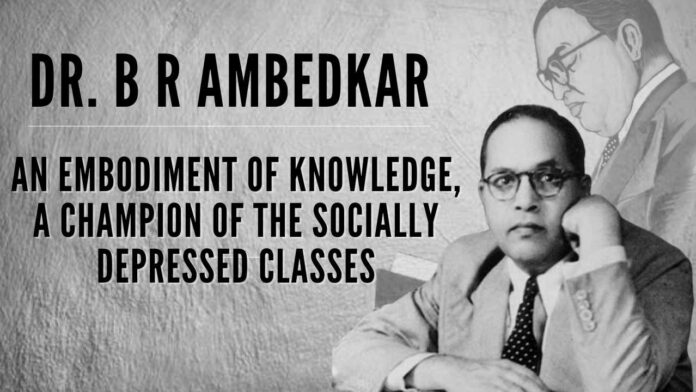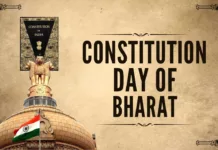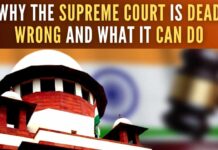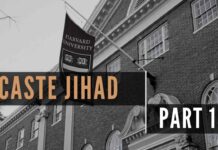
Remembering Dr. B R Ambedkar on his death anniversary
Dr. B R Ambedkar was born as Bhimrao Ambadvekar to Shri. Ramji Sakpal of Ambadve (Ambadve is in the current Ratnagiri district of Maharashtra) and Smt. Bhimabai in Mhow in present-day Madhya Pradesh in Bharat on the 14th of April, 1891. According to legend, his father was blessed by one of his uncles, who had renounced the world and become an ascetic. The uncle of Ramji Sakpal Ji had blessed the latter would be blessed with a son, who would achieve worldwide fame. That prophecy came true!
Two years, after the birth of Bhimrao, the family moved to Dapoli in the Konkan region of the Ratnagiri district of Maharashtra. Ramji Sakpal’s family was originally from the Ratnagiri district. It was at Dapoli that little Bhim was first enrolled in school at the age of five. The family had moved to Dapoli because Bhimrao’s father had retired from the army. Then, Ramji got a job at Satara in Maharashtra. The family shifted to Satara but unfortunately, tragedy struck the Ambadvekar family when Bhimrao’s mother fell ill and died soon after. It was his aunt, ‘Mira’, who took charge of taking care of her brother’s orphaned children especially little Bhim. Thus, although fate had dealt a severe blow to little Bhim in the form of his mother’s early demise, it gave him a loving hand in the form of a good aunt, Mira. However, the family continued to suffer monetarily.
It was Ramji, who had the most important hand in building the educational foundation of success for Bhimrao Ji. Ramji was a trained teacher and he supervised the education of his sons. Ramji was a devout Hindu and he read stories from the Ramayana and the Mahabharata to his children, regularly. Ramji was also a patriot. Thus, both the service to Bharat Mata and to Hinduism were embedded in the genes of Dr. B R Ambedkar. It is not surprising that one with the blessings of ‘Ram’ could achieve so much. Dr. B R Ambedkar’s life is indeed an example of a life touched by Godliness and divinity given that his own father was ‘Ramji’, who had been blessed by an ascetic uncle.
Ambedkar Ji: A man of astounding education and knowledge
Ambedkar was a man of stupendous learning, knowledge, brilliance, and intelligence. He began his initial schooling in Dapoli in Konkan, then he studied for a few years at Satara in Maharashtra and later continued his schooling education at Bombay in Elphinstone High School. His father, Ramji’s determination and devotion to his son’s education were unparalleled. Bhimrao was renamed by his Brahmin teacher as Bhimrao Ambedkar from Bhimrao Ambadvekar. In Bombay, Ambedkar Ji often met Shri. K A Keluskar, a social reformer, and scholar. Shri K A Keluskar was a great influence on Bhimrao and inspired the latter a great deal. Bhim was the first in his community to pass the Matriculation exam. He was felicitated by Shri. S K Bole, a well-known social reformer in the presence of Shri Keluskar. Later it was Keluskar, who took Bhimrao to Maharaj Sayaji Rao Gaekwad of Baroda, who paid for Bhimrao’s study in New York, America. Dr. B R Ambedkar did his Bachelor’s Degree in Arts at Bombay University. Then he did his M.A. in Arts and Ph.D. at the University of Columbia in America. He then did his D.Sc at the London School of Economics (LSE), London.
He also acquired degrees in Law and became Barrister in London. He was trained in Law at Gray’s Inn in London. He was a genius, who became the Faculty of Political science at Columbia University, New York.
Babasaheb Ambedkar was a very versatile personality because of his diverse learning. His early career was that of a lawyer, professor, and economist. In his later life, he became active in Indian politics.
Dr. B R Ambedkar’s personal life
His personal life was marked by troubles in his early childhood when he lost his mother early on. His father remarried, which caused unhappiness in Bhim. Bhimrao was married to Ramabai at a young age following the system of child marriage, which was prevalent in Bharat during those times. His wife provided a lot of support to him by encouraging him in his studies and endeavours. He had one son.
Ambedkar – Champion of social justice
Dr. B R Ambedkar had suffered a lot in life. He lost his mother at a young age. In addition, he was made to suffer because he was an ‘untouchable’. The community to which he belonged was the Mahar community and it was considered to be an ‘untouchable’ class. Dr. B R Ambedkar suffered from multiple intense traumatic experiences because of the cruel practice of untouchability. He rose to the occasion by working hard and studying superbly, acquiring multiple educational qualifications in arts, sciences, law, and philosophy, which later enabled him to deliver his community from ostracization. It was because of the efforts of Babasaheb Ambedkar, who became the Chairman of the Drafting Committee of the Constitution of India that the practice of ‘untouchability’ became a crime under Indian law and rightly saw. Dr. Ambedkar was not just against the practice of untouchability but he was against the ‘Chaturvarna’ system. He was the greatest champion of the socially depressed classes in India. He led his people to the Chowdar Tank at Mahad and drank water from it. This single act of defiance led to the exorcization of fear from the minds of his people. He exhorted his people to enter the Kala Ram temple at Nasik in Maharashtra. Dr. B R Ambedkar asked for a separate electorate for the depressed classes in India but he was persuaded to give up the same after Gandhiji’s intervention. At last, Ambedkar agreed to sign the Poona Pact, which instead of giving separate electorates gave more representation to the depressed classes.
Ambedkar and the Indian Constitution
Dr. B R Ambedkar was the Chairman of the Drafting Committee of the Constitution. His genius lay in the correct drafting of the Constitution of India by drawing the best from all the Great Constitutions of the world. He was a legal luminary and was adept in the drafting of the Indian Constitution. The Indian Constitution is a Written Constitution and a Rigid One.
Ambedkar’s diverse life experiences and his diverse education enabled him to create a great Constitution for India.
The basic features of the Indian Constitution include the Supremacy of the Constitution, Separation of powers between the three pillars of government – The Executive, the Legislature, and The Judiciary. The Constitution has given a Republican and Democratic form of government. In the ‘Indira Gandhi Nehru vs Raj Narain case’, it was held that the principle of free and fair elections is the basic feature of the Constitution. The Indian Constitution is the lengthiest and most detailed Constitution in the world having many salient features. There are over 443 articles and 12 schedules. The Constitution provides provisions for Fundamental rights, Directive Principles of State Policy, Emergency powers, etc. There is a division of powers between the Central and State governments and both are independent in their own spheres.
Political achievements of Ambedkar Ji
Ambedkar formed the Independent Labour Party and it won 15 seats in the Bombay Legislative Assembly before independence. In July 1942, the Viceroy appointed Ambedkar as the Labour Minister in the Executive Council. Ambedkar Ji formed the All India Scheduled Castes Federation in 1942. In 1946, Ambedkar was elected to the Constituent Assembly. Ambedkar took on the onerous task of preparing a Constitution for Bharat and performed his duty, extraordinarily well. He served as the Law and Justice minister in the first cabinet of Jawaharlal Nehru after Bharat’s independence between 15th August 1947 and 6th October 1951. He was also a Member of Parliament of Rajya Sabha for Bombay State between 3rd April 1952 and 6th December 1956.
Babasaheb’s views on caste/ religion
Dr. B R Ambedkar belonged to the Mahar community, which was considered to be an ‘untouchable’ community. In 1946, Ambedkar was elected to the Constituent Assembly. In his very first speech, he said, ‘With all our castes and creeds, I have not the slightest hesitation in saying that we shall in some form be a United People.’ So as per B R Ambedkar Ji’s own words, the people of Bharat shall remain united in spite of differences and diversity. On November 4th, 1948, Dr. Ambedkar presented the draft constitution to the Constitution Assembly. At that time, he said – ‘I appeal to all Indians to be a nation by discarding castes, which have brought about separation in social life and create jealousy and hatred.’
Shri. Keluskar had presented to Shri. Bhimrao, his book on ‘The Life of the Buddha’ on Bhimrao’s passing the Matriculation exam. Years later, Dr. Ambedkar was invited to the Buddhist Conference in Ceylon, where he said that – ‘In order for people to end their hardships, people should embrace Buddhism.’ On 14th October 1956, Ambedkar became a Buddhist. Later, he initiated many others into Buddhism.
One must note that he converted to Buddhism and not to Christianity or Islam. The Buddha is considered to be an incarnation of Lord Maha Vishnu by many Hindus.
Ambedkar and Savarkar
Ambedkar and Savarkar were contemporaries. Veer Savarkar was born in Nasik in Ratnagiri in Maharashtra whereas Shri. Ambedkar was born in Mhow in Madhya Pradesh in India although his family hailed originally from the Ratnagiri district in Maharashtra. Savarkar was born in 1883 whereas Ambedkar was born in 1891. So, Savarkar was a bit elder to Ambedkar in age. Both of them belonged to the socially depressed communities of their time. After his 10 years period of solitary confinement in the dreaded Andaman jail, Savarkar was confined for more time in Ratnagiri district. Vinayak Damodar Savarkar worked to eradicate the practice of untouchability from our society during his confinement at Ratnagiri from 1924 to 1937. In the year 1925, a temple was opened to all sections of Hindu Society as a result of the efforts of Savarkar Ji. Veer Savarkar was a great champion of the Dalit community and convened a major Mahar Conference at Ratnagiri.
Dr. B R Ambedkar openly appreciated Veer Damodar Savarkar as a champion of the Dalits and compared Savarkar to Bhagawan Gautama Buddha himself.
Dr. B R Ambedkar – The writer
Dr. B R Ambedkar was a prolific writer and wrote in support of India’s independence and in favour of Bharat, always. He was the founder of the publication, ‘Bahishkrit Bharat’ and edited other journals like the ‘Janata Magazine.’
Dr. B R Ambedkar – Lover of people
B R Ambedkar Ji was a highly compassionate soul. He was kind and respectful to everyone including his subordinates, while simultaneously maintaining his personal space.
Dr. B R Ambedkar – Lover of animals
He was kind and loving towards animals and kept pet animals.
Dr. B R Ambedkar and music
In his later years, Babasaheb took to playing the violin and immersed himself in the spiritual music of the violin.
Shri. Ambedkar’s last days
Dr. Ambedkar remarried a doctor in his twilight years after an illness – many years after the passing away of his beloved first wife. His last years were marked by greater tranquillity and he spent some quality time playing his beloved musical instrument, the violin in addition to his devotion to his political duties as a member of the Rajya Sabha. Ambedkar breathed his last in Delhi on the 6th of December 1956. The pyre was lit according to Buddhist rites and he was laid to rest at the Dadar Cemetery, in Bombay.
In the words of Shri. Rajendra Prasad – ‘Ambedkar was the architect of our Constitution and his services in various capacities, particularly for the uplift of the depressed classes cannot be exaggerated.’
Thus, Dr. Babasaheb Ambedkar was a great disciplinarian, a tireless knowledge seeker, a mountain of competence, education, and learning, a Champion of the socially depressed classes of Bharat, a legal luminary, a prolific writer, a powerful leader of the masses, a good politician, a compassionate soul who showed love and affection to everyone and everything including his subordinates and the vulnerable including plants and animals, a musician who could play the violin, a genius in stockbroking, an economist, an emancipator of women and a Hindu, who later converted to Buddhism.
He was awarded the Bharat Ratna posthumously in 1990. In retrospect, one wonders how India’s future would have been had Dr. B R Ambedkar or Netaji Subhas Chandra Bose, or Sardar Vallabhbhai Patel been India’s first Prime Minister instead of Shri. Jawaharlal Nehru Ji but then who could win by going against the wishes of ‘The Mahatma’?
Note:
1. Text in Blue points to additional data on the topic.
2. The views expressed here are those of the author and do not necessarily represent or reflect the views of PGurus.
PGurus is now on Telegram. Click here to join our channel and stay updated with all the latest news and views
For all the latest updates, download PGurus App.
- Shaheed Diwas: Remembering Bhagat Singh, Rajguru, Sukhdev on Martyr’s Day - March 23, 2024
- Chhatrapati Shivaji Maharaj – The unparalleled visionary leader - February 19, 2024
- The Constitution Day of Bharat - November 26, 2023










